You've noticed that your agricultural tyres are wearing down quickly or irregularly, so you've decided to change them in order to maintain good traction performance.
But have you thought about what's causing the problem?
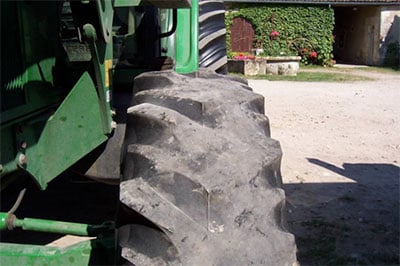 Before installing your new tractor tyres, you should identify the cause for this abnormal wear, otherwise the problem could reoccur and end up costing you even more money.
Before installing your new tractor tyres, you should identify the cause for this abnormal wear, otherwise the problem could reoccur and end up costing you even more money.
Tyre wear is inevitable, and one of the main signs is reduced lug height. This is caused by the rubber rubbing against the soil or road surface, and should usually be uniform across the entire width of the tyre tread. A tyre's life span can be extended if you use the right tyre pressure for the type of work, drive at a moderate speed and store the tyre correctly when not in use.
However, you may still see that the lugs are wearing too quickly or irregularly. This is an example of abnormal wear, and it's important you determine the cause so you can address it. Take advantage of the winter downtime to inspect your agricultural tools and vehicles.
In most cases, an incorrect mechanical configuration of your tools will be responsible for this wear, which you can determine simply by examining it.
Below you'll find six examples to help you determine the probable causes behind the irregular wear to your tyres.
When a trailer axle is misaligned, the problem is also transferred to the tractor axles; the front and rear of the tractor will thus be pushed in opposite directions (see figure below).
Signs of scraping and lateral streaks on the lugs appear on the trailer's tyres as well as on the tractor's. The towing eye may also show signs of irregular wear.
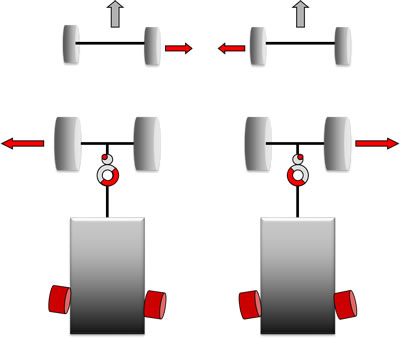
If the wear is confined to the outer side of the right tyre and the inner side of the left tyre, this might be caused by an incline in the road.
The problem is exacerbated if the working pressure is too low or if it's different on each side, but it can be rectified by adjusting the tractor's steering to minimise slip towards the bottom of the road.
The tyres can also be swapped over so they last longer. Ask to a local tyre expert to confirm, security first!
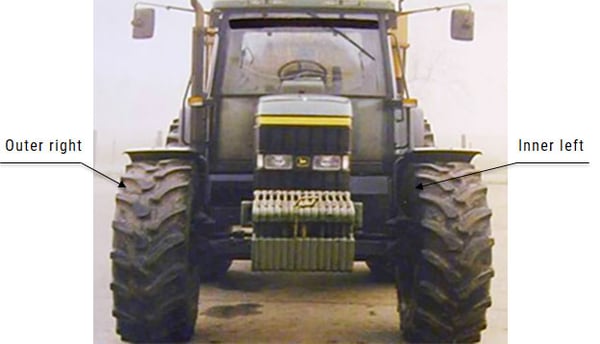
If the rear tyres have a "nipple" shape at the tip of the lug (with a higher thickness of remaining rubber), or even a bevelled edge, and signs of scraping while the front tyres are exhibiting normal wear, the problem may stem from road use when the front axle assembly is engaged.
In this case, you must inspect the front differential immediately because pronounced, irregular wear to the rear tyres will result in strong vibrations and will reduce the comfort and stability of your tractor.
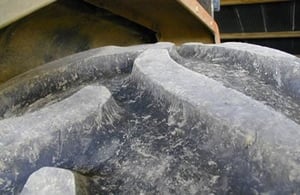
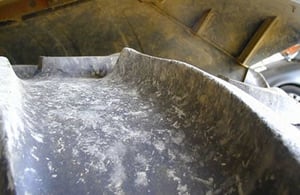
Irregular wear to the rear tyres due to a problem with the front axle assembly
Your rear tractor tyres look smooth, with more marked wear in the centre. This could mean you almost certainly use your tractor on the road to haul heavy loads. Tyre wear is accelerated by the road surface, which is more abrasive than soft soil, and the higher driving speeds. Check the distances travelled with the vehicle, and the split between roads and fields.
You can also calculate the load and compare it with the load capacity of the tyre you use. If the load is too heavy for the tyre, reduce it if possible or choose an agricultural tyre with a higher loading capacity. Also consider increasing the pressure when driving your tractor on the road with a heavy load.
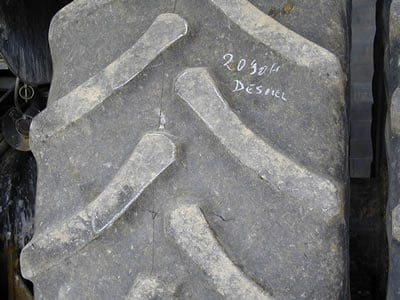
Rapid regular wear due to towing heavy loads on the road
Greater wear in the middle of agricultural tyres is probably a sign that your tyre pressure is too high, which causes the tyre to bulge and the it's the centre part that bears the brunt of the stress.
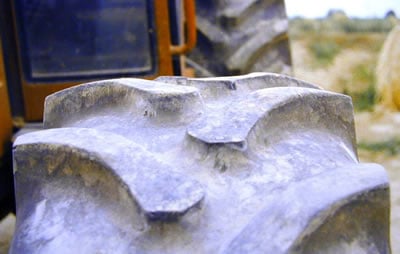
Central wear when the working pressure is too high
If the wear is predominantly on only one side of the tyre and there is left/right symmetry, check the front differential, the wheel alignment, and the clearance in the steering ball joints and bearings. A combination of causes is also possible:
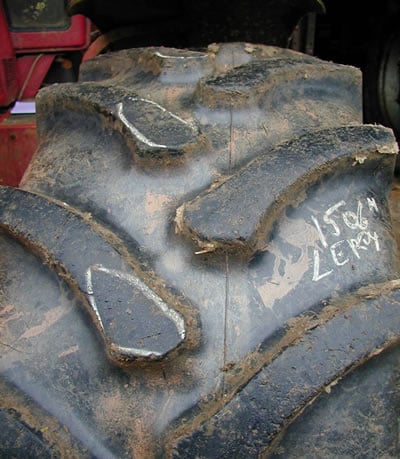
Wear on just one side of the tyre
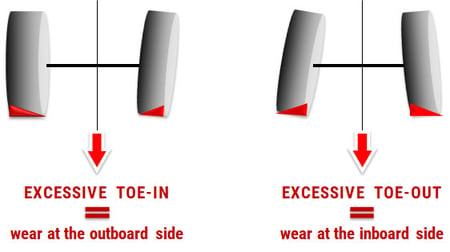
There may be other causes that have not been discussed in the examples above. If you notice another type of abnormal that's not been mentioned here, get in touch with your dealer so you can resolve the problem as quickly as possible.
To learn more and boost your farm's profits, Bridgestone Agriculture is offering you a free, detailed eBook that explains the essential role your agricultural tyres play in your productivity.
The most people who have read this article have also read the following articles, which are listed below in order of popularity:
This information is intended only to make you aware of the technical and functional aspects of agricultural tires and their use. It does not allow you to make a judgment or a definitive conclusion on a given problem. Only your agricultural tire expert is able to make a technical assessment and take a final decision, case by case.

BRIDGESTONE EUROPE NV/SA
AG Department
Leonardo Da Vincilaan 1
1930 Zaventem | Belgium
Our regional office:
Athena Drive, Tachbrook Park
Warwick CV34 6UX
United Kingdom